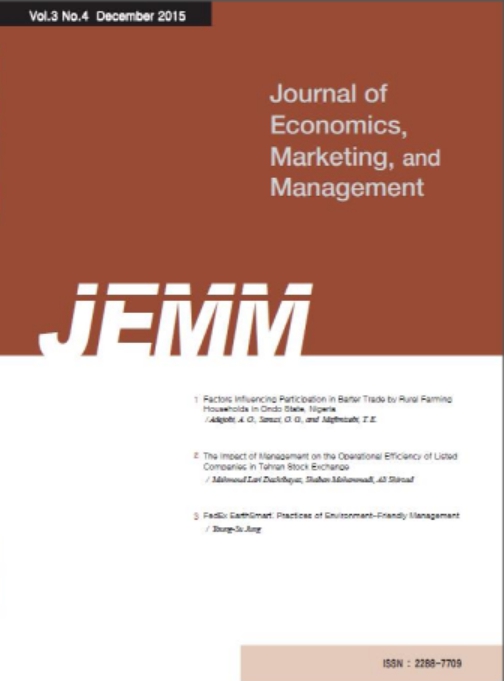- 권한신청
- E-ISSN2288-7709
- KCI
9권 1호
초록
Abstract
Purpose: The article deals with the proposition that consumers' fashion consumption behavior will still follow the consumption behavior of fast fashion, despite recognizing the importance of slow fashion. Research design, data and methodology: The research model to verify this proposition is topic modelling with big data including unstructured textual data. we combined 5,506 news articles posted on Naver news search platform during the 2003-2019 period about fast fashion and slow fashion, high-frequency words have been derived, and topics have been found using LDA model. Based on these, we examined consumers' perception and consumption behavior on slow fashion through the analysis of Topic Network. Results: (1) Looking at the status of annual article collection, consumers' interest in slow fashion mainly began in 2005 and showed a steady increase up to 2019. (2) Term Frequency analysis showed that the keywords for slow fashion are the lowest, with consumers' consumption patterns continuing around 'brand.' (3) Each topic's weight in articles showed that 'social value' - which includes slow fashion - ranked sixth among the 9 topics, low linkage with other topics. (4) Lastly, 'brand' and 'fashion trend' were key topics, and the topic 'social value' accounted for a low proportion. Conclusion: Slow fashion was not a considerable factor of consumption behavior. Consumption patterns in fashion sector are still dominated by general consumption patterns centered on brands and fast fashion.
초록
Abstract
Purpose: This study measured the consumer-perceived importance and satisfaction of eco-friendly food selection factors and performed the IPA to derive the factors that need to be maintained, reinforced, improved and selectively improved or where investment need to be minimized, and thus provide some clues for eco-friendly food companies' sales growth. Research design, data and methodology: To this end, efficient questionnaires of a total of 312 respondents who answered the questions about the importance of and the satisfaction with 20 selection attribute factors of eco-friendly foods were returned, and then, paired-samples t-test and IPA by all respondents, gender, age and incomes were conducted. Results: The analysis showed that a maintenance/reinforcement strategies planned by companies are required for some factors including 'safety' and 'product quality' at the first quadrant, while active improvement strategies are required for others including 'price' and 'flavor' at the second quadrant. Conclusions: The findings show that different marketing strategies should be established for each consumer who often purchase eco-friendly foods, and that more effective and efficient performance of eco-friendly food companies may be acquired by establishing and operating active improvement strategies.
초록
Abstract
Purpose: The forecasting is the likelihood scientifically proved judgment about the prospects, the possible conditions of this or that phenomenon in the future and (or) about the alternative ways and the means of their realization. To adapt the instruments of budgeting for the analysis cash flow of company. Research design, data and methodology: The creates the budget of cash flow were carried out on the basis of data of the report for the 2017 of corporations POSCO and in the first half of the 2018 Daewoo Shipbuilding & Marine Engineering of South Korea. Results: The simultaneous use of budgeting techniques and the simple financial analysis allows to systematize the transactions, to identify the main problem areas in the movement cash flows. Therefore, working capital analysis is to determine the limits of their fluctuations in view of the changes in the business processes. Conclusions: In the pedagogical context solved the features of budgeting in the part evaluation current assets, its financing, its elements: the cash, the debtor. In the process of budgeting of cash flow, in credit budget, in financial budget we can see the main indicators: the current assets, the functioning capital, the optimum number of debtors, the optimum amount of cash and another.
초록
Abstract
Purpose: In general, when a company wants to build a brand, its brand managers research the market and industry trends and then make decisions regarding the brand architecture and brand positioning development. This study was conducted not only in the service industry but also in manufacturing, finance, public institutions, and a variety of other business institutions. This led to a statistically significant difference between the status of external mobile branding for each business sector, and brand commitment and performance. Research Design, Data and Methodology: External mobile brand communication activities influence on employees' brand commitment. External mobile brand communication has a greater impact on employee brand commitment than any other factors. Result: Among the three external mobile branding activity variables, the external mobile brand communication variables have the greatest impact on employee brand performance. This supports the arguments proposed by that external mobile brand communication has a greater impact on employee brand commitment than any other factors. Conclusion: As a result, public institutions, such as ordinary businesses, need to recognize that external branding activities that enhance employee brand performance should be a key management activity. In contrast, financial institutions have the highest leadership activities and employee brand commitment.














